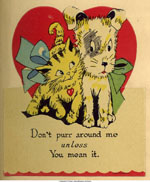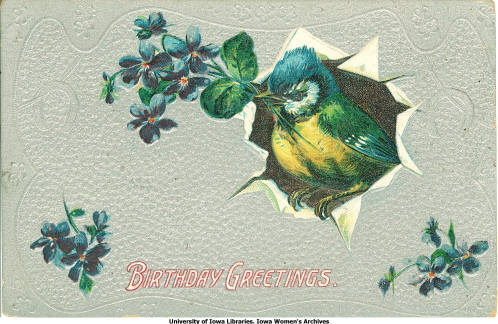Ghosts abound in our new digital collection about University of Iowa alumna Mildred Wirt Benson, the original author of the Nancy Drew mystery novels. Titles for the biographical articles “The Ghost of Ladora” and “The Ghost of Nancy Drew” play off Benson’s role as a ghostwriter. Teen sleuths confront the supernatural in novels like The Ghost of Blackwood Hall, The Haunted Bridge, and Quarry Ghost, although (spoiler alert!) a few hours spent in the Special Collections reading room would show that the heroines inevitably unmask the ghostly disguises of much more human criminal elements. And for me, working on the digital collection invoked personal ghosts as I handled the same titles that I used to find peeking out of Christmas stockings and wrapped up next to birthday cakes for so many years in my pre-teens.
But while studying the Libraries’ subject files on Benson and reading the publications of those who have used her collections, I also felt haunted by the ghosts of researchers past. The UI, like academic libraries everywhere, is working on the enormously complex problem of mainstreaming, standardizing and enhancing access to its rare and unique archival collections. In the meantime, a comprehensive search of these materials can require a considerable amount of time, patience and luck. For the Benson collection, I consulted a number of finding aids, catalogs and inventories – taking the same steps and compiling the same materials as many other scholars have done before me.
Now that these items are being digitized and collocated online, we hope to save the time of users (to cite another personal hero). And in addition to improving access to the materials, we’re also enhancing the usability of the artifacts themselves. With the help of optical character recognition software that makes items such as Benson’s short stories and journalism scrapbooks full-text searchable (as well as image zoom functionality that allows users a closer look at her diving technique), the digital collection becomes a much more powerful tool to help scholars solve their research mysteries.
We’re sure Nancy Drew would approve.
–Jen Wolfe
Metadata Librarian
See also:
UI libraries compiles digital collection featuring Nancy Drew author
UI provides more material for Drew fans















 student assistants took a break from finals to join us for pizza, cookies, and non-denominational merriment. The party also marked a successful conclusion to an experiment in supersizing our student workforce, up this semester from two members to eight. This 400% increase was initially regarded with more than a little apprehension, but it turns out we needn’t have worried. Our new assistants caught on quickly, and were soon diligently reformatting images, texts, and audio, creating metadata records, and using asset management systems to build and upload digital objects. Once trained, the main challenge was lining up enough work to keep our students busy, since they often completed projects earlier than anticipated.
student assistants took a break from finals to join us for pizza, cookies, and non-denominational merriment. The party also marked a successful conclusion to an experiment in supersizing our student workforce, up this semester from two members to eight. This 400% increase was initially regarded with more than a little apprehension, but it turns out we needn’t have worried. Our new assistants caught on quickly, and were soon diligently reformatting images, texts, and audio, creating metadata records, and using asset management systems to build and upload digital objects. Once trained, the main challenge was lining up enough work to keep our students busy, since they often completed projects earlier than anticipated.